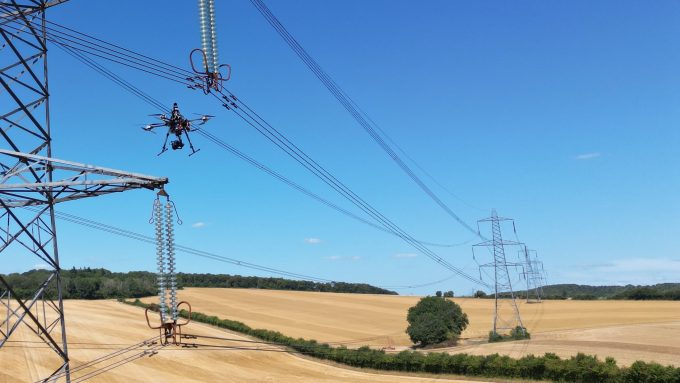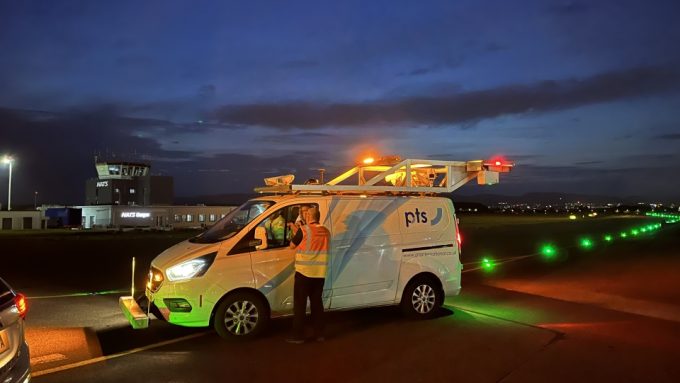
Meet the Academic taking a holistic view on aviation’s route to net zero

“Decarbonising energy systems associated with aviation depends on so much more than innovation; it is a socio-technical challenge,” says Cranfield University’s Professor of Sustainable Energy Transitions, Nazmiye Ozkan. “We must recognise that the task is complex, and cannot be focused on any one factor alone.”
She recognises “there are a number of competing technologies” in aviation and says there is “always room for more clever ideas” to decarbonise. But aside from innovation, the sector will need to agree on its policies, regulation, standards and priorities for achieving net zero by 2050 – and who will pay. “The target is achievable, but we need a more detailed plan of how to get there.”

Nazmiye recently completed a study titled ‘Low Carbon Energy Demand Scenarios for Aviation’ and received £50,000 of funding two years ago from the Transport Research & Innovation Grants programme, funded by the Department for Transport and delivered by Connected Places Catapult.
The study looked to model the additional energy demand that may arise from using green hydrogen and electricity to power airside operations, including road transport vehicles. It evaluated a series of socio-technical ‘scenarios’ from now until 2050 which considered how ready or not societies are for greener means of propulsion around airports.
Her study concluded that international governments must agree on new regulatory standards for the decarbonisation of the aviation sector, in order for the cost of low carbon fuels such as hydrogen and electricity to become more competitive, and allow for innovative new technologies to develop.
“But there is a gap in understanding how energy is currently used, and for what purposes,” Nazmiye says. “We can do a better job at decarbonising if we have more sources of data to analyse, so that infrastructure assets can be used in the most efficient ways.
“The biggest risk is that the aviation sector carries on as usual, and we become stuck with infrastructure that makes it too hard to make a change. We need the right infrastructure to be put in place before the need for it arises.”Cranfield University’s Professor of Sustainable Energy Transitions, Nazmiye Ozkan
Informing the climate debate
Addressing the climate challenge in aviation requires more than a “single bullet that solves everything”: Nazmiye suggests “a mix of solutions, for a range of geographies”.
“Only through independent academic research can we inform the debate in a transparent, evidence-based way, to allow novel ideas to come forward. For airports, transport and energy systems, the transition to net zero is complex. We need greater interaction between what society wants and the technology on offer to help solve the challenges we face.
“In conversations I have had with people in aviation, there is a recognition of a need to make changes to decarbonise, but some don’t know where to start. There is also uncertainty about the technology available, providing the infrastructure and constraints from an energy network perspective.”
She explains that an airport ground support provider may recognise that solely using electrical equipment will help better manage their costs, make them more efficient and help them get greener. But to charge many vehicles at once will require significant new infrastructure capacity.
For public chargers, airports will need to carefully consider how many are required, or whether new mobility solutions are worth investing in, she adds. Operators will need to understand what the energy requirement is likely to be in future years, and how best to provide for that extra demand.
Currently, there are very few data sets in terms of how energy is used within an airport and at what times, she adds. “When starting this research, I was struck by the complexity and the number of different people involved with energy systems at airports; sometimes with different priorities.”
She adds that being involved in the TRIG programme was hugely beneficial to her research.
“It was very helpful to be able to take part in open conversations with Connected Places Catapult, and it was really interesting to hear about other projects on the programme.”
Her early years
Nazmiye was born in Turkey and grew up in Istanbul at a time when coal was widely used to heat homes. “I remember walking to school and the polluted air making it difficult to breathe. My interest in the environment started fairly young.” Istanbul was growing fast and she later realised the difficulties the city was facing to accommodate population growth, so went on to study urban and regional planning.
After university she was offered a scholarship in America to study towards a PhD specialising in the relationship between the environment and economic growth, before becoming a postdoctoral researcher at the University of Illinois at Urbana-Champaign. “I considered the impact of emissions increasing in other countries when more goods and services are imported.”

She moved to the UK in 2004 and joined the UK Energy Research Centre at the Policy Studies Institute; a subsidiary of the University of Westminster. She worked as a Research Fellow, then a Senior Research Fellow, to develop the ‘UK MARKAL’ energy systems model used by Government and the Committee on Climate Change to identify least cost technology pathways and associated trade-offs for decarbonisation.
Using cleaner energy will often make financial sense, “but most people don’t insulate their homes – even though it will save them money,” notes Nazmiye.
She adds that her research interests moved from the solely quantitative (figures) to qualitative (feelings) associated with people’s attitudes towards electric vehicles, solar panels or when best to use household appliances to save money and reduce demand on the grid.
“Depending on people’s willingness to take part in the energy transition, we could end up with a system that is more bottom-up, with individuals and communities playing more of a role,” she says.
“As an urban planner, I am particularly interested in understanding what drives low carbon technology adoption geographically.”
In 2014, she took up the post of Senior Lecturer at Cranfield University and in 2019 was appointed head of the university’s Centre for Energy Systems & Strategy. Today she is driven to help “share her knowledge and experiences, and help others achieve their ambitions”.
Nazmiye is currently exploring the concept of ‘Energy as a Service’ – similar to that of ‘Mobility as a Service’ where individuals pay a subscription rather than for resources consumed at the point of use. She is also looking forward to exploring new ways of thinking about the energy transition from an urban planning perspective.
A third area of her research focuses on the development of a net zero hydrogen economy in the UK. She is the national director of the Global Hydrogen Production Technologies Center which is funded by the UK, US, Australian and Canadian governments.
Nazmiye says she enjoys challenging herself through her academic work, and the “creative aspect of using data” to tell a story. “That is why I like teaching,” she continues.
“I might give students a challenge: asking them to decarbonise an airport. I want to see their creativity in terms of collecting data, introducing technologies, justifying their selections and seeing what it could all mean for society.”
Find out more about the Transport Research & Innovation Grants programme.





